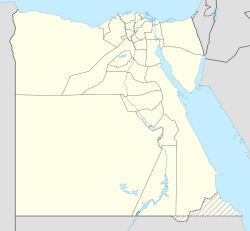| KV35 | |
|---|---|
| Burial site of Amenhotep II | |
 Entrance to KV35 | |
| Coordinates | 25°44′23.6″N32°36′0.5″E / 25.739889°N 32.600139°E |
| Location | East Valley of the Kings |
| Discovered | March 9, 1898 |
| Excavated by | Victor Loret |
| Layout | Bent-axis |
Tomb KV35 is the burial place of Amenhotep II, a pharaoh of the Eighteenth Dynasty of Egypt, in the Valley of the Kings in Luxor, Egypt. Later, it was used as a cache for other royal mummies. It was discovered by Victor Loret in March 1898.














